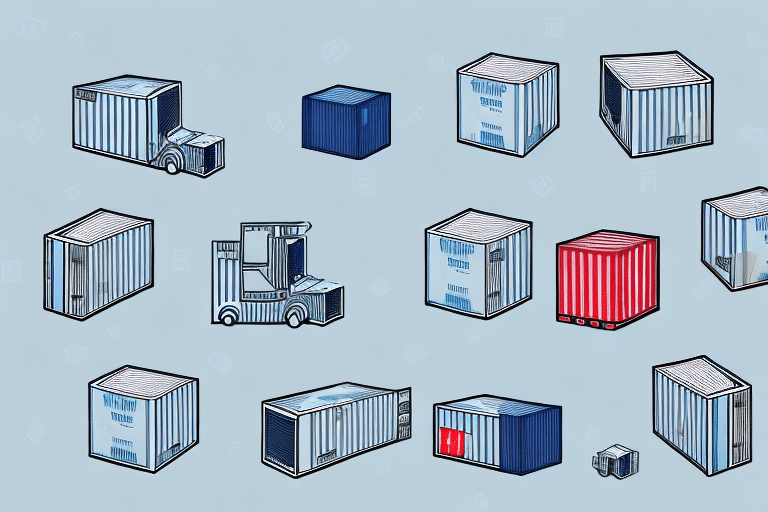Maximizing Efficiency with Residential Ground Shipping
When it comes to shipping goods, especially for residential purposes, there are numerous factors to consider. The process can be complicated, time-consuming, and expensive, but it’s a crucial step that cannot be avoided whether you’re running an e-commerce business or simply need to send packages to your loved ones. In this article, we will discuss how to maximize efficiency with residential ground shipping and streamline your shipping process for optimum results.
Understanding Residential Ground Shipping
What is Residential Ground Shipping?
Residential ground shipping is a method of transporting packages and goods from one location to another using ground vehicles such as trucks and vans. This method is typically used for packages that don't require expedited delivery, such as e-commerce orders, personal purchases, and gift packages.
Ground shipping is often more cost-effective compared to other shipping methods like air freight or expedited shipping. According to the United States Postal Service (USPS), ground shipping can be up to 60% cheaper than expedited shipping options [1].
Advantages and Disadvantages
Advantages:
- Cost-Effectiveness: Ground shipping is generally less expensive than air or expedited shipping options.
- Environmental Impact: Ground transportation tends to emit fewer greenhouse gases compared to air freight.
- Reliability: For non-urgent deliveries, ground shipping provides a reliable option with predictable delivery windows.
Disadvantages:
- Slower Delivery Times: Ground shipping typically takes longer than air or expedited shipping methods.
- Potential for Delays: Weather conditions, traffic, and other unforeseen events can cause delays in delivery.
- Weight and Size Restrictions: There may be limitations on the weight and dimensions of packages that can be shipped ground.
Choosing the Right Shipping Service
Factors to Consider
When selecting a shipping service for residential ground shipping, consider the following factors:
- Reliability: Choose a provider with a strong track record of on-time deliveries and minimal package damage.
- Price: Compare shipping rates from different carriers to find the most cost-effective option.
- Delivery Speed: Assess your delivery time requirements and choose a service that meets your needs.
- Service Options: Look for additional services such as package tracking, insurance, and delivery confirmation.
Coverage Area and International Shipping
Ensure that the shipping provider covers the regions you need to ship to, including rural or remote locations if necessary. If you require international shipping, verify that the provider offers international services and is knowledgeable about customs regulations.
Streamlining Your Shipping Process
Standardizing Packaging and Labeling
Establish standardized packaging and labeling procedures to minimize errors and ensure consistency. Using the appropriate size and type of packaging can help protect your items and reduce shipping costs. Clear labeling with accurate addresses prevents delivery mishaps and delays.
Leveraging Technology
Investing in shipping software can greatly enhance your shipping efficiency. Modern shipping platforms integrate with e-commerce systems to automate label printing, order tracking, and inventory management. Tools like ShipStation or Easyship provide comprehensive solutions for managing your shipping operations.
Negotiating Rates with Carriers
If your business has a high shipment volume, you may be eligible for discounted rates from carriers. Negotiating directly with shipping providers can lead to significant cost savings. Additionally, utilizing shipping aggregators that compare rates from multiple carriers can help you choose the most economical option for each shipment.
Packing and Labeling Best Practices
Proper packing and labeling are crucial to ensure that your packages arrive safely and on time:
- Use Sturdy Materials: Invest in high-quality boxes and packing materials to protect your items during transit.
- Clear Labeling: Clearly print both the sender’s and recipient’s addresses. Include any necessary instructions, such as "Fragile" or "This Side Up."
- Appropriate Sizing: Choose a box that fits your item snugly with sufficient padding to prevent movement during shipping.
Cost-Effective Shipping Solutions
To reduce shipping costs further, consider the following strategies:
- Volume Discounts: Take advantage of bulk shipping discounts offered by carriers.
- Eco-Friendly Packaging: Using recycled or biodegradable materials can lower costs and appeal to environmentally conscious customers.
- Free Shipping Offers: Offer free shipping for orders above a certain value to incentivize larger purchases while managing costs.
Tracking and Monitoring Shipments
Implementing robust tracking and monitoring practices helps ensure that your shipments are delivered successfully:
- Automated Tracking Tools: Use software that provides real-time tracking information for both you and your customers.
- Inventory Management: Keep accurate records of your inventory and shipments to prevent errors.
- Customer Notifications: Set up automated notifications to keep customers informed about their order status.
Handling Returns and Refunds
Efficiently managing returns and refunds is essential for maintaining customer satisfaction:
- Returns Portal: Create an easy-to-use returns portal on your website to streamline the process.
- Clear Instructions: Provide detailed instructions on how to return items, including packaging and labeling requirements.
- Quick Processing: Ensure that refunds are processed promptly to maintain trust with your customers.
Overcoming Common Shipping Challenges
Despite best efforts, shipping challenges can arise. Here’s how to address them:
- Delays: Plan for potential delays by setting realistic delivery expectations and communicating proactively with customers.
- Damaged Packages: Use adequate padding and choose reliable carriers to minimize the risk of damage.
- Incorrect Addresses: Implement address verification tools to ensure accuracy and reduce the likelihood of delivery issues.
Evaluating the Impact of Residential Ground Shipping on Your Business
Regularly assess how your shipping practices affect your business:
- Cost Analysis: Track all shipping-related expenses to identify areas for cost reduction.
- Customer Feedback: Collect and analyze customer feedback to improve your shipping process.
- Environmental Impact: Evaluate your shipping methods’ environmental footprint and consider adopting more sustainable practices.
Enhancing Customer Experience with Efficient Shipping
Efficient shipping contributes significantly to a positive customer experience:
- Timely Deliveries: Ensure packages arrive within promised time frames to build trust and satisfaction.
- Transparent Communication: Keep customers informed about their order status through regular updates and tracking information.
- Reliable Service: Consistently providing reliable and safe deliveries encourages repeat business and positive reviews.
By implementing these strategies and best practices, you can optimize your residential ground shipping process, reduce costs, and enhance the overall customer experience. Regular evaluation and adaptation to changing market conditions and customer needs will ensure that your shipping operations remain efficient and effective.




















